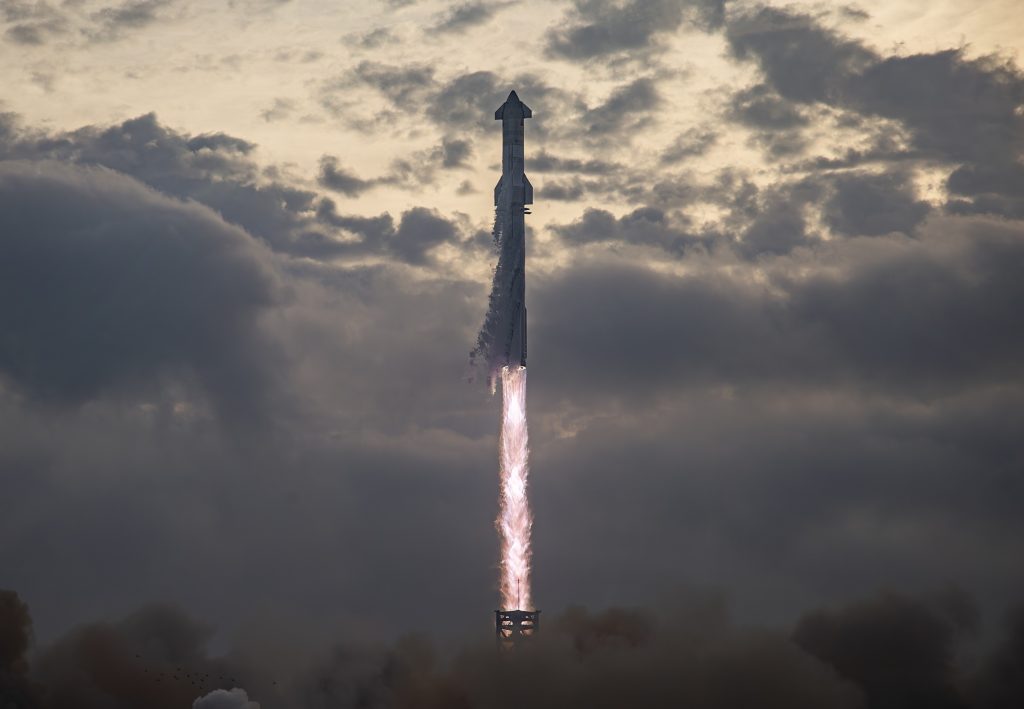SpaceX wants to launch its Starship vehicle again in early May, but it depends on how fast it can get a new launch license.
At the Satellite 2024 conference on March 19, Gwynne Shotwell, president and COO of SpaceX, said the company is still reviewing the data from the vehicle’s third integrated launch on March 14. She noted that they expect to be ready to fly again soon after the previous flight. She mentioned that they are still reviewing the data from the flight and that it was a very successful one, hitting the target precisely.
During the last launch, both the Super Heavy booster and Starship upper stage performed as expected, placing the vehicle on its planned suborbital trajectory.
While in space, the payload door of Starship was opened and there was a demonstration of moving liquid oxygen between two tanks in the vehicle.
However, a planned restart of Starship’s Raptor engines while in space did not happen, which the company attributed to a roll in the vehicle. The vehicle broke apart during reentry, and the Super Heavy booster exploded during the landing burn.
Shotwell mentioned that they will investigate both stages and aim to resume flight in about six weeks or early May.
She mentioned that they don’t plan to deploy Starlink satellites on the next Starship launch, as some had speculated. They aim to focus on getting reentry and landing right.
The schedule depends on completing a mishap investigation approved by the FAA, which needs to modify the existing launch license for Starship before the next launch.
Kelvin Coleman, FAA associate administrator for commercial space transportation, did not expect the investigation to uncover major issues that could significantly delay the next launch.
Coleman described the end of the last launch as a mishap, but still deemed it a successful launch attempt with no injuries or property damage. SpaceX was able to collect a great deal of data from the launch.
He anticipated that SpaceX would quickly provide a mishap investigation report, noting that they didn’t see any critical safety systems implicated.
The FAA has updated SpaceX’s Starship launch license after every flight to reflect changes in the mission. Coleman indicated that the agency wants to move to a process where the license is valid for a portfolio of launches rather than individual ones, especially given SpaceX’s plan for multiple Starship launches this year.
That is part of a wider effort to simplify the process of approving launch licenses under a new set of regulations known as Part 450. Coleman announced at the FAA Commercial Space Transportation Conference on Feb. 21 that the agency would create an aerospace rulemaking committee, or SpARC, to formally gather industry input on ways to improve Part 450.
Shotwell, speaking at the Satellite 2024 conference panel, did not mention the number of Starship launches the company expects to make this year, but she said the focus is on getting the vehicle operational.
“I’d love to get Starship into orbit, deploying satellites, and recover both stages,” she said, “with rapid turnaround on those stages as well.”









